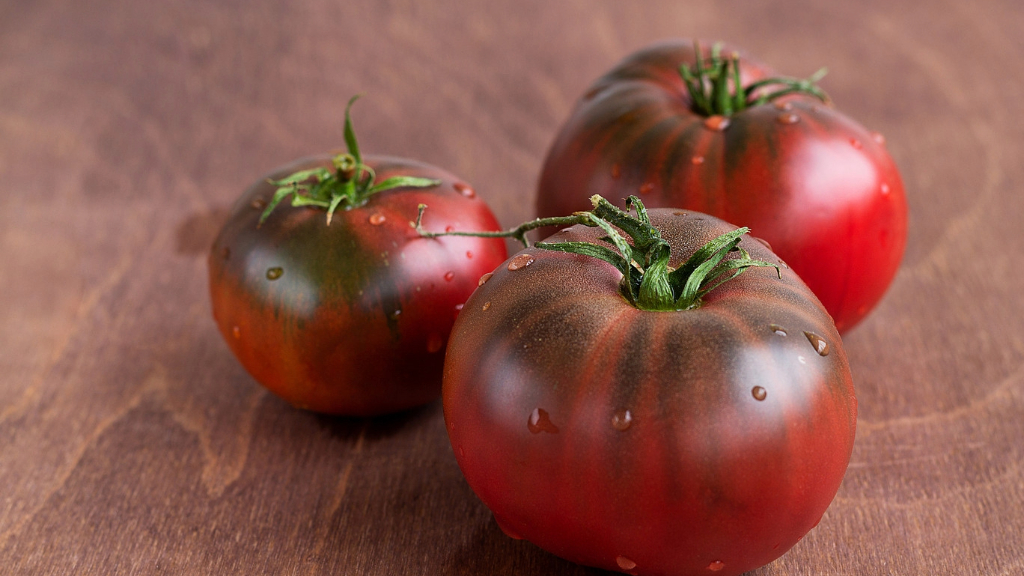History Of Black Brandywine Tomato Plants


Black tomatoes seem to be a joke of nature. Just thinking of black tomatoes has me remembering a very early frost one year which killed all my ripening tomatoes, turning my vines into caricatures of plants decorated with mushy rotting fruit. In the case of black Brandywine tomato plants, the result is intentional and yields sweet, juicy fruits with just a deeply black-red skin. This happy situation is the product of a wonderful plant enthusiast who developed not only Brandywine, but a famous pole lima plant. Today, these heirloom tomato plants are still as popular as the day they were discovered and are available through exchange and reputable seed banks.
History Of Black Brandywine Tomato Plants
True Black Brandywine tomatoes (Lycopersicon lycopersicum 'Black Brandywine') produce medium sized fruits that may achieve up to 14 ounces in weight but are more normally 6 ounces. The tomatoes are rich, juicy and fleshy with dusky purple tones. The flavor is complex, earthy and sweet with just a hint of spice in the aroma. The story behind this heirloom tomato is just as complex with a bit of a mystery. It is said to have been developed by a dentist who was an amateur plant breeder. Dr. Harold E. Martin is most known for a pole lima bean with huge seeds that he bred. This plant was a commercial release, but True Black Brandywine he saved for himself and certain discerning collectors. It is said to be a cross between Brandywine and Feejee Improved, a brown beefsteak tomato. The plant was bred around the 1920's and became quite a local sensation. The mystery deepens, however, as modern heirloom seed providers dispute the origins of True Black Brandywine. The classic Brandywine tomato is a potato leaf, pink-fleshed fruit that was probably a sport introduced in either 1982 or by some accounts in 1996. The actual evidence is still coming in as to whether it was a true heirloom or came about through natural selection and hybridization. Whatever the case, Brandywine has become one of the most popular tomato selections available. True Black Brandywine is probably an actual heirloom from Dr. Martin but its name is modern, tagged in recent history by its collector William Woys Weaver when he began to disseminate the seed, and it does not mean the plant is a cross or hybrid of Brandywine. Apparently, he got the seed from his grandfather, who got his from Dr. Martin. The whole story has a "he says, she says" element to it and very little has expert confirmation.
Growing Heirloom Tomato Plants
No matter how the plant came about and who introduced the tomato, True Black Brandywine plants do produce excellent fruits and are more than holding their own against commercial varieties of black tomatoes. It takes full sun and organic rich, well-draining soil to grow these babies. Sow them indoors 6 weeks before the date of your last frost for best results. Sow seeds 1/8 inch deep and place flats or containers in a warm location of 65 to 75 degrees Fahrenheit (18-23 C.) for quick germination. Keep containers moderately moist. Transplant outdoors after hardening off when all danger of frost is past. Space plants 30 to 36 inches apart and set up stake or cages to train plants as they grow. True Black Brandywine is a quick growing plant that will set fruit 80 to 90 days from seed.
Gardening tips, videos, info and more delivered right to your inbox!
Sign up for the Gardening Know How newsletter today and receive a free copy of our e-book "How to Grow Delicious Tomatoes".
-
 Get Ready For A Summer Of Hummers! Grow These Full Sun Hummingbird Plants and Flowers
Get Ready For A Summer Of Hummers! Grow These Full Sun Hummingbird Plants and FlowersIf you’re lucky enough to enjoy a sunny backyard, make sure you are maxing out on your pollinator opportunities and grow these full sun hummingbird plants and flowers
By Tonya Barnett
-
 12 Lush Alternatives To A Lawn For Sustainable Spaces
12 Lush Alternatives To A Lawn For Sustainable SpacesAlternatives to a lawn are beautiful and also beneficial to your local ecosystem and its pollinators. Explore our top picks for plants to replace grass.
By Tonya Barnett